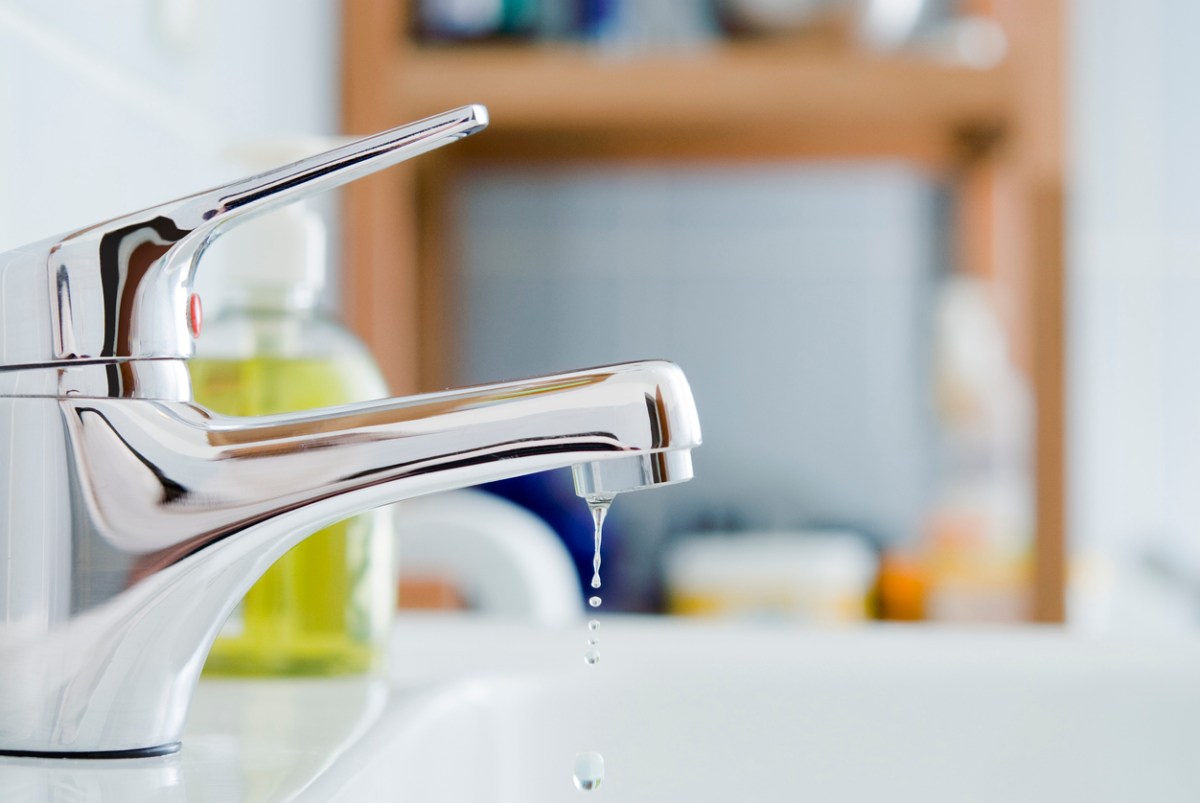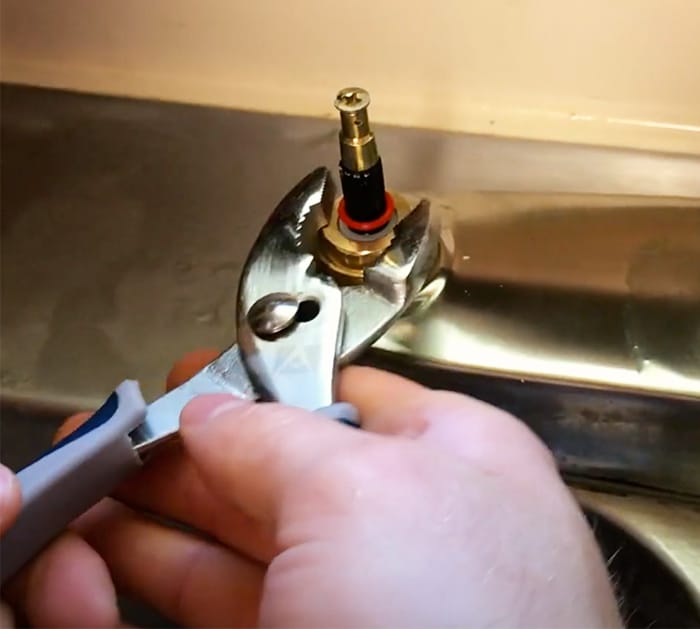Learning the Significance of Fixing a Broken Faucet
Learning the Significance of Fixing a Broken Faucet
Blog Article
They are making a number of great pointers relating to How to Fix a Dripping or Leaky Faucet as a whole in the article below.

Trickling taps may look like a small trouble, however their impact surpasses just the nuisance of the noise. From wasting water to sustaining unneeded economic expenses and health and wellness dangers, neglecting a dripping tap can cause different repercussions. In this write-up, we'll delve into why it's vital to resolve this common home issue promptly and efficiently.
Waste of Water
Environmental Effect
Leaking taps add significantly to water wastefulness. According to the Environmental Protection Agency (EPA), a single faucet dripping at one drip per secondly can lose more than 3,000 gallons of water each year. This not only stress water resources yet likewise impacts ecological communities and wild animals dependent on them.
Step-by-Step Guide to Taking Care Of a Dripping Tap
Tools Called for
Before trying to fix a trickling faucet, collect the required tools, consisting of an adjustable wrench, screwdrivers, replacement components (such as washing machines or cartridges), and plumber's tape.
Common Tap Issues and Their Solutions
Determine the sort of tap and the details issue causing the drip. Common problems include damaged washers, corroded shutoff seats, or faulty O-rings. Refer to supplier directions or online tutorials for step-by-step assistance on fixings.
Financial Expenses
Raised Water Bills
Beyond the ecological effect, dripping taps can inflate water bills significantly. The collected waste gradually converts into higher energy expenditures, which can have been stayed clear of with prompt repair services.
Prospective Home Damage
Additionally, extended trickling can cause damage to components and surface areas surrounding the tap. Water accumulation can create discoloration, deterioration, and even structural problems if left neglected, causing additional repair work expenses.
Health Problems
Mold And Mildew and Mold Growth
The continuous existence of wetness from a trickling tap produces an ideal environment for mold and mildew growth. These fungi not only compromise indoor air high quality however also position health threats, specifically for people with respiratory problems or allergic reactions.
Waterborne Diseases
Stagnant water in leaking faucets can become a breeding place for bacteria and other virus, increasing the danger of waterborne diseases. Pollutants such as Legionella germs grow in stagnant water, possibly bring about serious health problems when consumed or inhaled.
DIY vs. Professional Repair service
Pros and Cons of DIY Repair Work
While some may attempt to take care of a leaking faucet themselves, DIY repair services include their very own set of difficulties. Without correct expertise and devices, DIY attempts can intensify the issue or lead to incomplete repairs, lengthening the problem.
Advantages of Employing a Specialist Plumber
Working with a professional plumber makes sure that the underlying cause of the leaking tap is resolved successfully. Plumbing technicians have the expertise and devices to detect and repair tap issues successfully, conserving time and minimizing the risk of further damages.
Ecological Duty
Specific Contribution to Conservation
Taking obligation for fixing trickling taps aligns with wider initiatives toward water conservation and environmental sustainability. Every person's activities jointly make a substantial influence on preserving precious resources.
Sustainable Living Practices
By prioritizing punctual repairs and embracing water-saving practices, individuals contribute to lasting living methods that benefit both present and future generations.
Safety nets
Normal Maintenance Tips
To avoid trickling faucets, perform routine maintenance such as cleaning aerators, checking for leakages, and changing worn-out components immediately. Additionally, take into consideration setting up water-saving gadgets or upgrading to much more reliable fixtures.
Importance of Prompt Services
Resolving dripping faucets as quickly as they're noticed prevents additional water wastage and potential damage, ultimately saving both water and cash in the long run.
Influence On Residential Property Value
Understanding of Well-Maintained Property
Maintaining a residential or commercial property in good condition, consisting of dealing with maintenance problems like trickling taps, boosts its regarded value and worth amongst prospective purchasers or occupants.
Influence on Resale Value
Features with well-kept plumbing fixtures, consisting of faucets, command greater resale worths in the real estate market. Attending to dripping taps can add to a positive impact during building evaluations and arrangements.
Conclusion
Dealing with a leaking tap goes beyond mere comfort; it's an essential step toward saving water, reducing financial costs, and securing wellness and property. Whether via DIY repair work or expert assistance, acting to repair trickling faucets is a small yet impactful means to advertise accountable stewardship of resources and contribute to a much healthier, a lot more sustainable future.
How to Fix a Dripping or Leaky Faucet
A leaking faucet is one of the most common problems that homeowners encounter, but it being commonplace doesn’t make it any less annoying. The constant drip drip drip of a leaking bathtub faucet, showerhead, or sink tap can disturb your home’s serenity. Left neglected, a dripping faucet can also result in higher water bills and discoloration or mold growth in your sink or plumbing fixtures.
Fortunately, you don’t have to be a trained plumber to know how to stop a dripping faucet. With some basic tools, replacement parts, and a little patience, leaky faucet repair is a breeze. In this article, we’ll explain what causes dripping faucets and how you can fix them.
What Causes a Leaking Faucet?
Kitchen and bathroom faucets come in all manner of designs, but most involve some combination of valves, O-rings, seals, and washers. The O-ring is usually the weakest link, but any one of these pieces can wear down over time. Heat, moisture, temperature fluctuations, minerals, mold, and movement can contribute to warping and corrosion, breaking the watertight seal. This just comes with the territory of being a homeowner. Everything is always subject to wear and tear, and some component parts of your appliances and fixtures need to be replaced on occasion. At least replacement O-rings are cheap!
More rarely, dripping faucets can be a symptom of excessively high water pressure. Were this the case in your home, you would probably notice that the leak is not isolated to one faucet. Water pressure issues are harder to resolve on your own. We recommend contacting a professional plumber if you suspect your water pressure is too high.
How to Fix a Dripping Faucet
Pipe wrench or monkey wrench Allen wrench set Screwdrivers Old towel or rag Shut off the water.
Before you do anything, you need to turn off the water to keep from drenching your kitchen or bathroom. You should find a valve under the sink and against the wall. Once you’ve turned this valve, try turning the faucet on to confirm that the water source has been cut off.
If you can’t locate your local valve for the faucet you’re working on, you can always shut off the water to the house at the main valve. Of course, this will prohibit anyone from using the sinks, showers, or toilets while you’re working on the faucet that’s giving you trouble.
Plug or block the drain.
You’ll be disassembling the faucet and removing some small bits of hardware. Plug the drain with a stopper or rag to avoid the possibility of a small screw falling into your P-trap.
Take apart the faucet assembly.
There are several varieties of kitchen and bathroom faucets, each with its own manner of assembly. For detailed instructions on how to disassemble your faucet, you can refer to the fixture’s manual or contact the manufacturer. If you know whether you have a ball, disc, cartridge, or compression faucet, you can find detailed schematics online.
In general, you need to begin by removing the faucet handles. You might notice a small screw that you’ll need to remove with a screwdriver or Allen wrench. If you don’t see any visible securing hardware, it’s likely hidden under a decorative cap that can be unscrewed or popped off with flathead screwdriver.
Remove each piece methodically, consulting a schematic when necessary. Take notes or arrange the pieces in such a way to make it easier to correctly reassemble the faucet later.
Remove the cartridge.
Once you’ve removed the handles and securing hardware, you should be able to remove the valve cartridge or stem. Some cartridges will slide right out. Other faucet models will require you to loosen a nut with a pipe wrench before you can remove the valve stem.
Examine the exposed hardware.
With the cartridge or stem removed, inspect the component parts. Check the rubber O-rings for wear and tear. Also examine the seat washer for corrosion or other damage. These pieces are usually the responsible parties for a dripping faucet, but it’s worth inspecting the other component parts while you have the faucet disassembled.
Find replacement parts.
Once you’ve identified which faucet component has failed, find an identical replacement. Your local hardware store should have O-rings, seat washers, and other standard components in stock. If you have a luxury or uncommon faucet, you may have to contact the manufacturer for a replacement part.
It’s a good idea to take your old parts with you to the hardware store so you can compare them with the store’s inventory and be sure you’re purchasing the correct replacement.
Reassemble the faucet.
With your new parts in hand, reconstruct the faucet and handles. Don’t be tempted to overtighten screws or nuts. You might think this could create a better seal, but it can instead damage or bend a delicate part of the assembly and create a new problem for you.
Turn on the water and test the faucet.
The only thing left to do is test your work. Unplug the sink, turn the water back on, and try the faucet. Congratulate yourself on a job well done!
https://www.libertyhomeguard.com/how-to-fix-a-dripping-or-leaky-faucet/

Do you like reading up on 4 Common Reasons for a Leaky Faucet? Give a remark down the page. We will be glad to hear your thoughts about this post. We hope that you come back again later on. Appreciated our write up? Please quickly share it. Let other people locate it. Thank-you for going through it.
Report this page